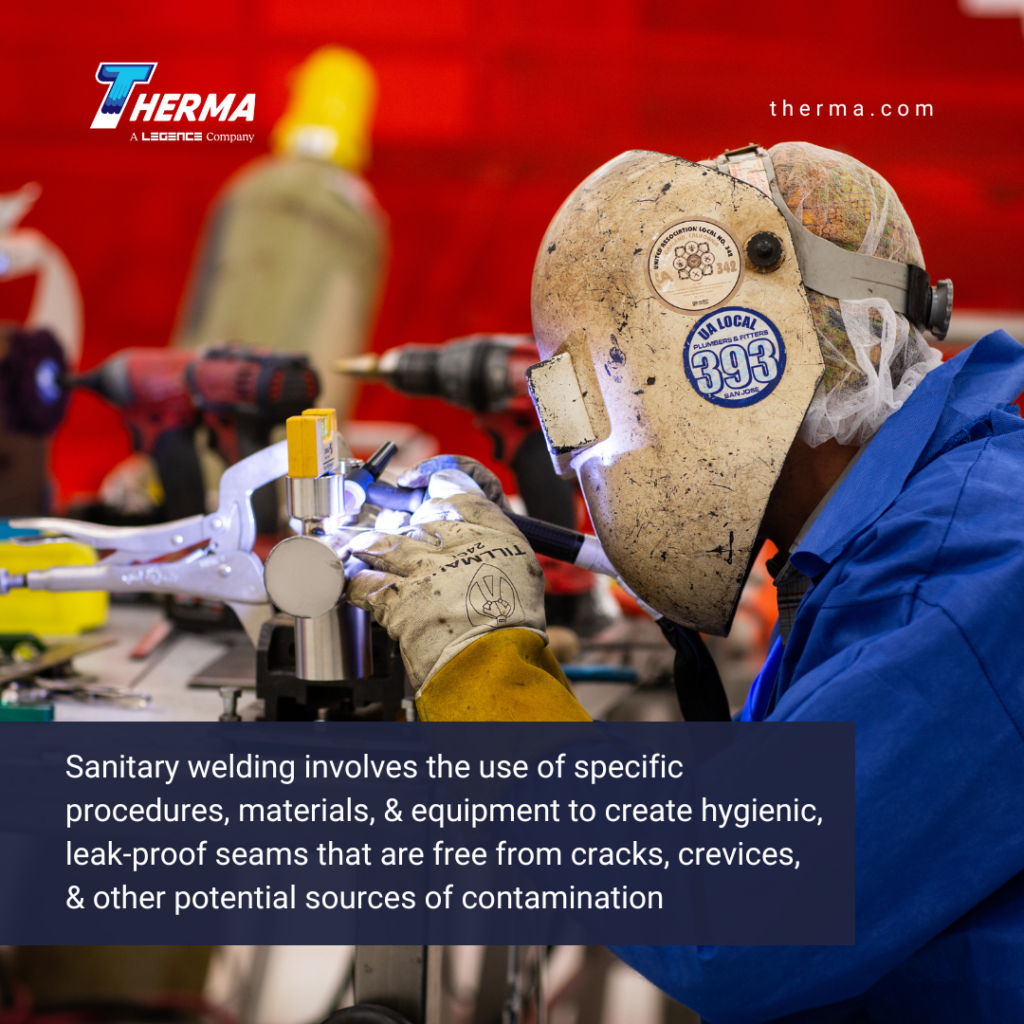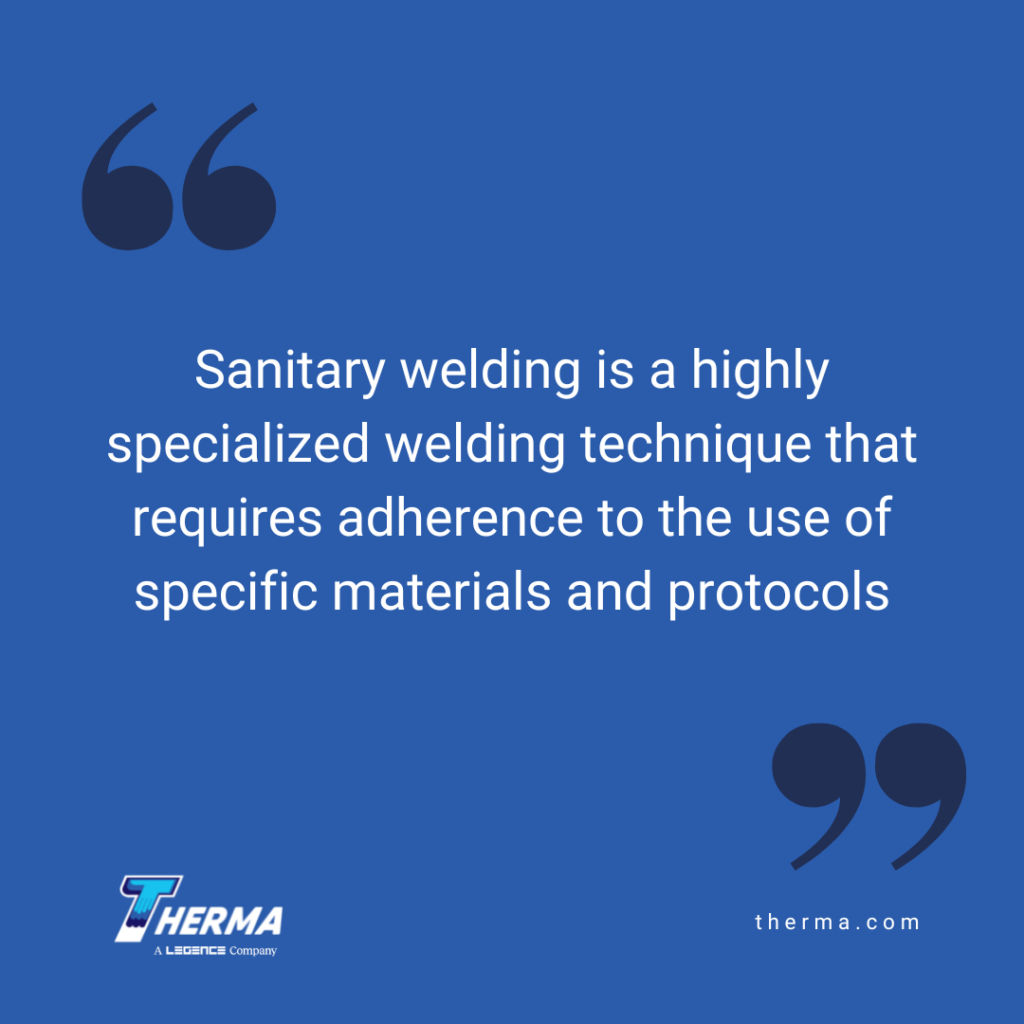by Robert Evans
Sanitary welding plays a critical role in ensuring the safety and quality of the food we consume. In food processing plants, it is essential to maintain a high level of hygiene and cleanliness to prevent contamination and the spread of bacteria. Sanitary welding conforms to a strict set of standards to maintain a safe and sanitary environment. It involves the use of specific procedures, materials, and equipment to create hygienic, leak-proof seams that are free from cracks, crevices, and other potential sources of contamination. By understanding the significance of sanitary welding, we can appreciate the effort that goes into producing safe and healthy food for consumers. Let’s explore the importance of sanitary welding in food processing plants, including its role in preventing contamination, ensuring food safety, and meeting regulatory requirements.
What Made Sanitary Welding Necessary?
Sanitary welding became necessary in the food processing industry due to concerns over food safety and the spread of bacteria and other contaminants. With the growing global population and increased demand for food, it became increasingly important to maintain high standards of hygiene and cleanliness in food processing plants. This is particularly crucial in handling and processing raw food materials, which can carry harmful bacteria that can cause foodborne illnesses if not properly contained. Traditional welding techniques and materials jeopardize a sanitary environment while sanitary welding addresses the strict government standards to ensure a safe, sanitary environment.
The federal government enacted the Food Safety Modernization Act (FSMA) in 2011. The FSMA aimed to modernize the food safety system in the United States and give the Food and Drug Administration (FDA) more authority to regulate food processing plants and ensure the safety of the food supply.
Standards and Regulations
Today, sanitary welding standards are a critical component of food safety and are governed by strict regulatory requirements set by several government organizations. U.S. federal law separates the food processing industry into two groups: the Food Safety Inspection Service (FSIS) of USDA oversees meat/poultry while the Food and Drug Administration (FDA) oversees “all other food processors”. Both agencies follow similar procedures at times, but there are also differences in their practices.
In the United States, the FDA sets regulations for sanitary welding in food processing plants through the Food Safety Modernization Act (FSMA) and other food safety regulations. These regulations cover a wide range of aspects of sanitary welding, including material selection, welding procedures, and equipment maintenance and cleaning.
The European Hygienic Engineering & Design Group (EHEDG): The EHEDG sets regulations for sanitary welding in Europe, guiding hygienic design, fabrication, and construction of food processing equipment.
The 3-A Sanitary Standards are a set of internationally recognized standards for the sanitary design and construction of food processing equipment. The standards cover a wide range of aspects of sanitary welding, including material selection, welding procedures, and equipment maintenance and cleaning.
Criteria for Sanitary Welding
Sanitary welding is a highly specialized welding technique that requires adherence to the use of specific materials and protocols. Consult the necessary government authorities previously listed to ascertain the specific requirements for your case. What follows are some of the main criteria to satisfy the standards set for sanitary welding:
Design for Contamination Prevention
To prevent contamination, food items should not come in contact with porous surfaces, and equipment should have no crevices, cracks, or corners for contamination to collect. The machinery must be easy to clean and disassemble for cleaning and made of stainless steel which is non-porous and easy to clean. However, it must also be properly designed for complete cleaning to a microbiological level, which requires navigating regulations and requirements with a knowledgeable team.
Approved Stainless Steel
Not all grades of stainless steel are approved, it must have a minimum chromium content of 16% to meet Food Contact Substances (FCS) standards. SAE 200 series, SAE 300 series and SAE 400 series that are chromium-based alloys meet FDA, ANSI, and NSF standards. Any stainless steel used in outdoor areas must be placed in a well-ventilated, low-salt, and oxygen-rich environment to maintain its ability to resist corrosion.
Compatible Materials
Food contact surfaces must not only be stainless steel but also have compatible connecting metal to prevent corrosion and heat stress cracking. This can cause liquids and food to get trapped in corroded surfaces, leading to bacteria growth.
Stress-free Surfaces
Surface stress can be caused by heat, galvanic coupling, poor engineering design, excessive stress during construction, or heat during welding, leading to stainless steel degradation and corrosion.
Smooth and Clean
This is a major challenge, requiring the skills of engineers and welders to ensure the surface roughness does not exceed .8µm or 30 Ra. Welds must be smooth with no sharp edges or burrs to prevent food material entrapment and bacterial growth. Edges should be rounded, crevices filled, internal angles and corners curved, and welds made on flat surfaces. All areas should be easily cleaned, with no cracks, seams, or gaps for pathogens to accumulate. Connectors should be avoided, and metal structures should not be pierced or have hollow areas, which should be sealed. Joints must be sealed to prevent bacterial accumulation.
Avoid These Mistakes
in sanitary welding, it is important to avoid the following mistakes:
- Welding Different Types of Metals Together: This is a serious mistake that can result in metal corrosion, food contamination, and metal cracking due to differences in thermal capacities. To avoid this, make sure your manufacturer is reputable and familiar with industry standards and educate your in-house engineers and safety teams on these standards.
- Failing to Remove Burrs and Sharps: In food-grade equipment, it is unacceptable for small burrs and sharps to remain on metal surfaces. These must be smoothed out through techniques such as sanding or electropolishing.
- Overstressed Surfaces: Welders must avoid techniques that cause excessive stress on metal surfaces, particularly with food-grade stainless steel. Too much heat or force during a weld can cause stress cracks or corrosion.
- Bolted Framework: Connections in metal parts must be sealed, not just bolted, to create a smooth surface. Screw threads must be sealed, and equipment must be connected using tight seals that allow for later disassembly for repairs and cleaning.
- Welding in Inner Corners: Inner corners and angles must be radiused and welds should only be made on flat surfaces. Welding along or inside corners can result in sharp angles and porous surfaces, which are breeding grounds for bacteria.
Therma is Here to Help
Navigating the intricacies of regulated sanitary welding is challenging. Our team at Therma understands the importance of properly constructed and maintained stainless steel equipment in food processing. We’re dedicated to helping customers design, construct and maintain their equipment so that it meets all regulations and standards. With our engineering expertise and knowledge of industry standards, we ensure that all stainless steel used in food production is safe and compliant. Connect with us if you need advice or help with sanitary welding and take advantage of our 50 years of experience in the business.
References
3 A: Hygienic by Design
European Hygienic Engineering & Design Group: Our Vision
U.S Food & Drug Administration: Food Safety Modernization Act (FSMA)
North Dakota State University: Regulation of the U.S. Food Processing Sector
U.S. Department of Agriculture: FSIS Highlights 2022 Accomplishments in Protecting Public Health









